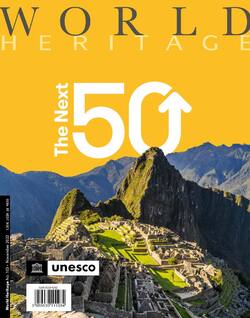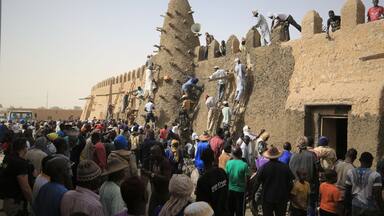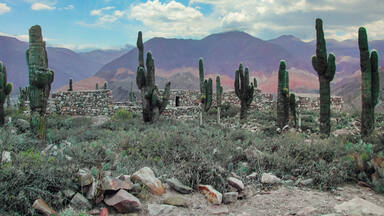Tongariro National Park, on the North Island of New Zealand, was the first World Heritage property to be awarded in 1993 the dual status of ‘cultural landscape’, recognizing both its exceptional natural features and its historical, cultural and spiritual significance to its indigenous owners.
The 80,000-ha park incorporates three active volcanos – Tongariro, Ngauruhoe and Ruapehu. (Some visitors will recognize Ngauruhoe as Mordor’s forbidding Mount Doom in the Lord of the Rings films.) Tongariro features a diverse range of ecosystems and some of the country’s most spectacular landscapes. The park has active and extinct volcanoes, green lakes, old lava flows and alpine gardens. It is stunning in its diversity.
Adding another dimension to its incredible scenery, Tongariro is tapu, sacred, to Tangata Whenua (‘people of the land’), the Maori people who have inhabited it since at least the 14th century. They have worshipped the mountains and buried their chiefs there, and maintained their sense of responsibility for its protection. In 1886, to prevent the sacred land from being sold off to European settlers, a Maori chief had the mountains officially set aside as a reserve. In 1887, a partnership was established with the British sovereign, at the time Queen Victoria, and with the New Zealand government to ensure the continued safeguarding of Tongariro. In 1894, Tongariro National Park was founded – the first national park for New Zealand, the fourth in the world, and the only one to have been donated by its original occupants.
The park was first inscribed on the World Heritage List in 1990, but only for its natural attributes, not for its sacred meaning to the Maori people. At the time, the criteria for cultural World Heritage sites required the presence of built heritage, such as a temple, as evidence of their cultural use. Finally, in 1992, the World Heritage Committee, inspired by New Zealand, decided that certain sites where the cultural association was intangible could also qualify.
Tongariro was renominated for its value as an ‘associative cultural landscape’— a new category for sites that possess ‘powerful religious, artistic or cultural associations of the natural element rather than material cultural evidence, which may be insignificant or even absent’.
Since the designation of Tongariro National Park as a cultural landscape, awareness and understanding of Maori cultural values have increased. The park remains a popular holiday destination for skiers, mountain climbers, hikers and birdwatchers. The Maori people’s continued presence ensures that the cultural, spiritual and environmental values of this special place are protected and shared with visitors.
The site’s values are communicated to the public through signage, publications and interpretation at visitor centres. The Maori have been involved in creating displays explaining the cultural and natural significance of the park, to inspire respect for its conservation. They also participate in developing education resources and biodiversity programmes, and assessing concession applications.
Today, Tongariro National Park shows that protecting the environment and biodiversity while preserving and respecting traditional indigenous culture can be beneficial for all.




